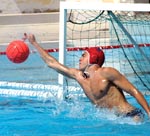Sports in schools
From rugby to tai-chi, hockey to canoe polo, anything goes in school sports today, says Melanie Cable-Alexander


Time was, choosing a sport was a simple process at school. It was a matter of rugby, cricket and hockey, unless a child was at Eton, when there would be games such as Fives on offer, too, an eccentric game of throwing a ball against a wall that Eton more or less invented. These days, there is a vast array of activities on offer from water polo (huge at King Edward’s Birmingham) and canoe polo (at Brambletye) through to tai-chi and the Brazilian martial art capoeira (both taught at Eton).
Tom Brown, who was passionate about his pony, would be in his element, because the fastest-growing sport has been polo. In 1991, when the Schools and Universities Association took off, there were three polo-playing schools: Millfield, Rugby and Eton. Today, there are 58 schools that play polo and it’s proving hugely popular: more than 10% of pupils play at Wellington College. Even Downside, steeped in a more traditional Catholic ethos, fields a team. One new parent only sent her child to Downside on condition that the school did support polo.
The rise of the game is put down to the Pony Club. ‘Children wanted more than just the few weeks of the game they got with the Pony Club in the summer holidays,’ says Roger Horne, who established polo at Sherborne as a parent. ‘From there, it snowballed.’ However, it’s not only polo that has become popular: golf is also taking a hold the Duke of York has partly funded scholarships for golf at Wellington. And clay-pigeon shooting is firing on all barrels as a major activity. Anthony Seldon, Wellington’s charismatic head, believes shooting to be the ‘next big thing’.
Mr Seldon suggests that the present ethos for schools to provide a greater selection of sports for children can only be a positive: ‘It’s about trying to find sports that everyone can succeed in.’ A feat at which Millfield is talented one child came on a netball scholarship and left an international-standard archer.
Traditional sports are benefitting from the sporting renaissance, too. According to sports writer and commentator Sally Jones, ‘rackets is thriving in the schools where it’s played, and there are record numbers of children in the national schools championships in December (singles) and March (doubles), with Winchester, Harrow and Wellington being particularly dominant’.
Rugby has launched an appeal to bring Rugby (as opposed to Eton) Fives back. The difference is in the number of walls Rugby has four and Eton three. Altogether, 35 schools play Rugby Fives (such as Marlborough, Blundell’s and Oundle) and both girls and boys play. Then there’s real tennis Radley is opening its own real-tennis court in October, thanks largely to the fundraising skills of former racing trainer Ian Balding, who lives nearby and has become passionate about the game.
However, by far ‘the greatest change we have noticed is the invasion of boys’ sports by girls,’ says Ralph Lucas, an editor of the The Good Schools Guide. ‘There has been a big increase in girls’ rugby and especially girls’ football.’ Certainly, my son, a passionate rugby player, was thrown when he played a match against the Sherborne Under 10 As and found that one player sported a large pigtail. ‘It’s a girl,’ he squealed, totally put off his tackling stride. (If it had been me, I would have been tempted to pull her hair, but the boys were better behaved than me.)
Exquisite houses, the beauty of Nature, and how to get the most from your life, straight to your inbox.
Cricket is also attracting girls, and is bound to be boosted by England’s recent World Championship win. My step-grandmother was very proud of playing cricket at Roedean, but that was nearly 100 years ago, when Roedean was a rare school to have cricket. Now there are many more, says Mr Lucas.
He cites another transformation: ‘Boys have more freedom to play softer sports. Tennis is more prominent than it used to be, ditto athletics, basketball and volleyball. There is also an extraordinary rise in chess.’ He attributes this to giving the ‘seriously unsporty a chance to duck out of excess exercise’. Such is the burst of sporting enthusiasm, there is now the UK School Games, held in Bath and Bristol in August. It’s a kind of ‘mini Olympics’, designed to encourage schools to let their young stars compete internationally not only for the school team. There are nine different events, including athletics, badminton, table tennis and gymnastics.
There is another surprising entrant to sport in schools, says Mr Lucas. He highlights a ‘gentle uptick’ in ballroom dancing. What would Tom Brown have said about that?
Country Life is unlike any other magazine: the only glossy weekly on the newsstand and the only magazine that has been guest-edited by His Majesty The King not once, but twice. It is a celebration of modern rural life and all its diverse joys and pleasures — that was first published in Queen Victoria's Diamond Jubilee year. Our eclectic mixture of witty and informative content — from the most up-to-date property news and commentary and a coveted glimpse inside some of the UK's best houses and gardens, to gardening, the arts and interior design, written by experts in their field — still cannot be found in print or online, anywhere else.
